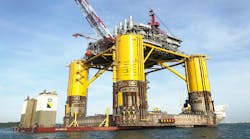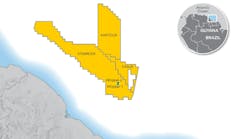Offshore staff
DENVER –Full waveform inversion is one of the topics featured by CGG at the 2014 SEG International Exposition and 84th Annual Meeting.
Full waveform inversion (FWI) has gone from being a specialist tool to one with many applications, and it has become a component of the velocity model building tools.
FWI uses all the recorded seismic, including parts often removed during conventional processing. The technique updates the velocity model by minimizing the mismatch between the observed seismic data and data modeled through the current earth model. FWI velocity models can be at a higher resolution than conventional models and can be as spatially well resolved as the actual seismic images, says CGG.
FWI can improve the modeling of complex velocity structure associated with such phenomena as shallow gas, paleo-channels, supra-salt sediment carapace, or permafrost zones. In these instances, the variable shallow geology causes shadow zones and distortions in the seismic image. These hinder accurate imaging of the deeper earth. The models produced by FWI can be used by imaging algorithms, such as reverse time migration, to provide clearer subsurface images.
CGG says it continues to further refine the FWI processing flow, and has developed methods to reduce the artefacts and velocity errors associated with cycle skipping. Cycle skipping can be reduced in two ways: adaptive data selection can automatically derive the most suitable offset range and mute parameters without requiring manual input, while a probabilistic QC technique helps guide the choice of starting a velocity model.
In addition to velocity, FWI can also assist with the derivation of other seismic parameters. Anisotropy (VTI or TTI) is included in the modeling of FWI. But now a joint update of velocity and epsilon together can be performed, thereby updating the anisotropy. Also, a high-resolution FWI velocity model can better constrain the area of analysis and convergence of Q tomography, providing superior imaging.
10/29/14





